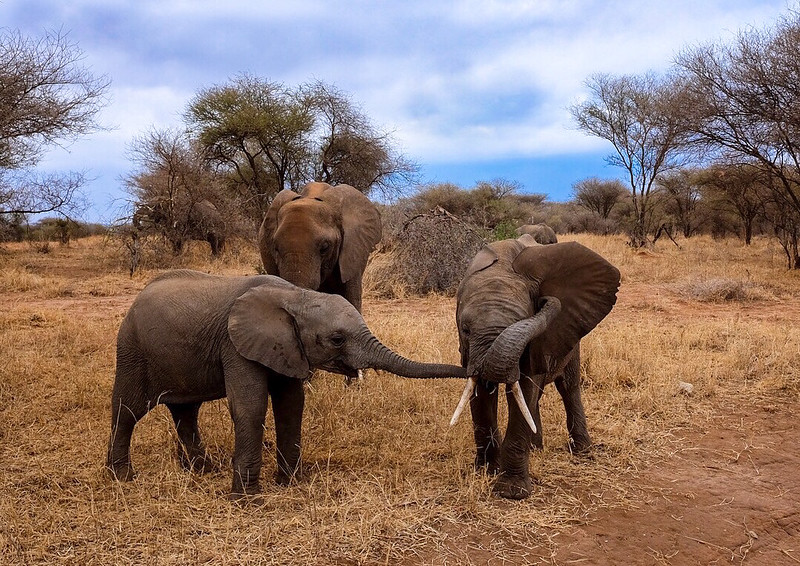When to Visit Serengeti National Park
We don’t say this lightly: the Serengeti National Park always surprises, regardless of the time of year. The centerpiece of most travelers’ plans is, with good reason, experiencing the Great Migration. However, we invite you to look beyond the Great Migration and discover other wonders of the Serengeti. We are here to unveil your mystery about When to visit Serengeti National Park
Follow the Great Migration
Serengeti National Park offers extraordinary wildlife viewing opportunities throughout the year – you just need to know when to go where to witness one of nature’s last true spectacles: the Great Migration. For example, winter is ideal for seeing the herd in Southern Serengeti, while the Western Corridor and Northern Serengeti are best in summer and autumn. It’s important to note that nature here is unpredictable. Chance plays a big part in witnessing the iconic river crossing when two million animals cross a river with rapids jostling their bodies and crocs snapping at their hooves. Nonetheless, choosing the right part of the Serengeti at the right time usually means large herds are easily spotted and there’s a fair chance of witnessing a spectacular migrational movement.
Beyond the Great Migration
Although most travelers can’t wait to glimpse the wildebeest’s spectacular trek, Serengeti National Park has much more to offer. Golden-maned lions sunbathing on a rock, an elusive leopard chilling out on an acacia tree branch, and a cheetah chasing a gazelle at full speed on the sunburnt plains are just a few of the Serengeti’s magical sights.
There are compelling reasons to avoid the Great Migration. First, areas where it can be seen become crowded, impacting your safari experience. Second, most predatory species (and many other wildlife species except zebra and wildebeest) are territorial and do not wander too far, so following the crowds is unnecessary. Moreover, many Serengeti safari camps offer lower rates (often called ‘green season’ rates) in April and May. Lastly, outside peak periods, the Serengeti is far less crowded, while wildlife viewing remains superb.
Avoid the Crowds
Unique spectacles like the Great Trek can attract many spectators, making the heart of the migration feel crowded – with human species. Especially in the Seronera area, visitors may find the Serengeti crowded, sometimes too crowded. Big cat sightings draw numerous safari vehicles. Seronera, with many lodges and campsites, is easily accessible, leading to busy roads within a 10-kilometer radius. To experience the Serengeti as it should be, we recommend splitting your itinerary: part in the migration heartland (with heavier vehicle traffic) and part in a remote location during the off-season. Options include the Western Corridor from August to October or the Mara Serengeti area from November to June, with fewer visitors and wildlife viewing almost as good as in Seronera.
For those preferring solitude, low season travel is ideal. Low visitor numbers and lower camp rates occur mid-March to mid-May (long rains), early November to mid-December (short rains), and the last two weeks in January.
Seasonal Serengeti
Most travelers choose the dry season (late June to October) for a Serengeti safari. Animals gather around rivers and waterholes. The Great Migration peaks, offering the best chance of witnessing an iconic river crossing. Most lodges remain open during the tranquil ‘wet season’ when rains turn the landscape lush and green and the birthing season begins. Here are some pros and cons for each season:
June to October – Dry Season
PROS:
- The thick bush thins out, making wildlife easier to spot.
- Animals gather around rivers and waterholes.
- Expect bright days with lots of sunshine and afternoon temperatures around 25°C / 77°F.
- Lower chance of malaria due to fewer mosquitoes.
- Easier to spot the Great Migration, including iconic river crossings if lucky.
CONS:
- The park gets crowded, especially around the Seronera area.
- Nights and mornings can be relatively cold, with temperatures around 14°C / 57°F.
- Occasional cold fronts may bring temperatures close to freezing.
November to May – Wet Season
PROS:
- Late January to February is calving time in the Southern Serengeti, excellent for seeing predator action.
- Lush, green landscape.
- Fewer tourists and lower rates, especially in April and May.
- Ideal for birdwatching.
- From November to February, rains are mostly short afternoon storms, seldom interfering with trips.
CONS:
- March to May is the peak of the wet season, with rain most days, though seldom all day. Often cloudy.
- January to March can be crowded around the Seronera area.
Trust us with your adventure as we guide you on When to visit Serengeti National Park as Abunda Discoveries Uganda your best Tour Partner.




